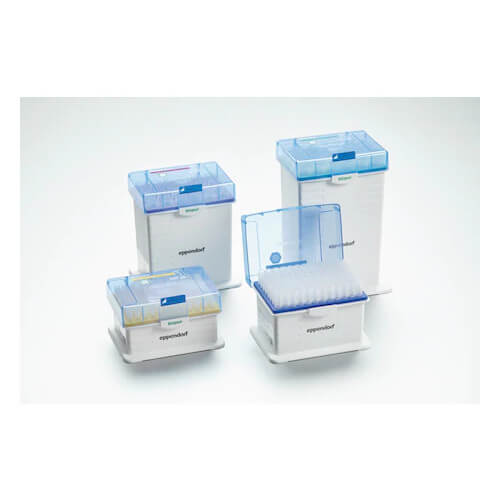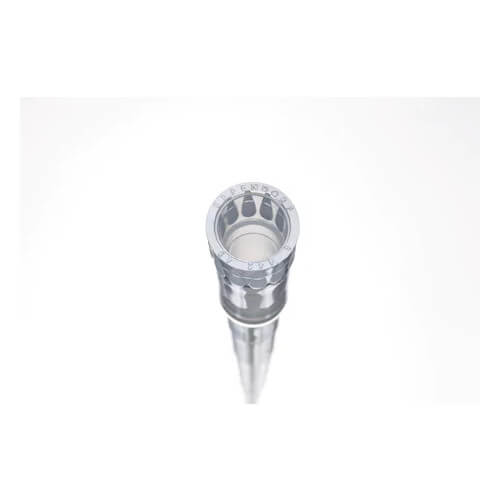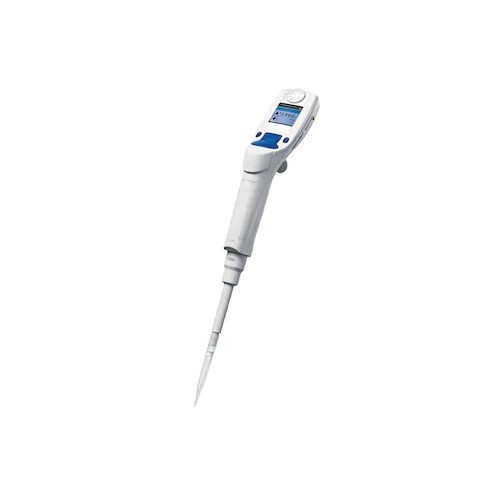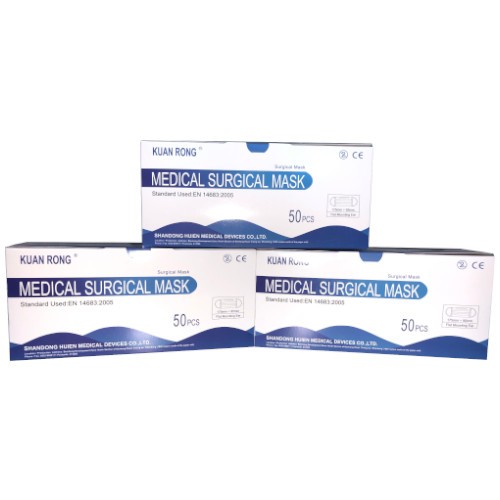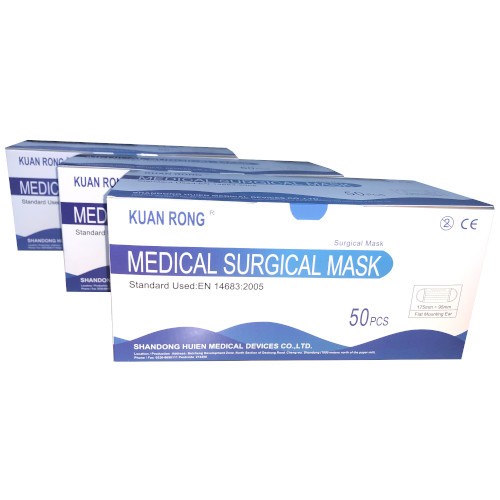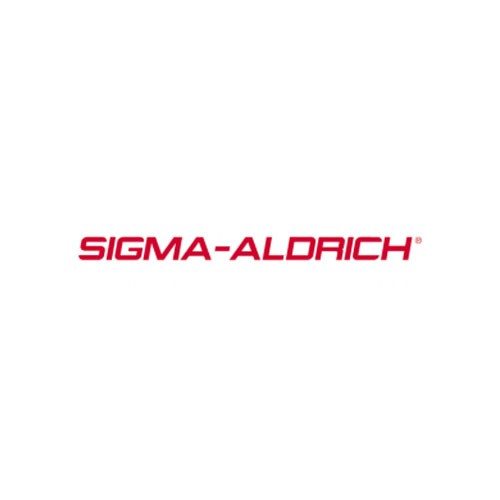
N,N-Dimethylacetamide, ReagentPlus®, 99% (Sigma-Aldrich)
Login to see pricesBrand:
Sigma-Aldrich
General Description
CAS number: 127-19-5
Chemical Formula: CH3CON(CH3)2
Molar Mass: 87.12 g/mol

Histopaque®-1077 (Sigma-Aldrich)
Login to see pricesBrand:
Sigma-Aldrich
General description
Histopaque-1077 is a sterile, endotoxin tested solution of polysucrose and sodium diatrizoate, adjusted to a density of 1.077g/mL. This ready-to-use medium facilitates rapid recovery of viable lymphocytes and other mononuclear cells from small volumes of whole blood.
Application
Haematology: suitable
Histology: suitable
Histopaque-1077 has been used for-
• the isolation of peripheral blood mononuclear cells (PBMCs) and bone marrow mononuclear cells (BMMCs)
• purification of mononuclear cells through centrifugation
• isolation of human lymphocytes
• isolation of breast cancer circulating tumour cells (CTCs) from whole blood

Triethylene glycol, ReagentPlus®, 99% (Sigma-Aldrich)
Login to see pricesBrand:
Sigma-Aldrich
Description
CAS number: 112-27-6
Chemical Formula: HO(CH2CH2O)2CH2CH2OH
Molar Mass: 150.17g/mol
Synonyms: Triglycol

RNaseZAP™ (Sigma-Aldrich)
Login to see pricesBrand:
Sigma-Aldrich
Description
Cleaning agent for removing RNase
Application
RNA purification: suitable
RNaseZAP™ has been used as a cleaning agent for removing RNase from glassware, apparatus, countertops and pipettors.
A cleaning agent for removing RNase from glassware, plastic surfaces, countertops, and pipettors. It is also effective at eliminating RNase contamination from microcentrifuge tubes without inhibiting subsequent enzymatic reactions.

Quercetin, ≥95% (Sigma-Aldrich)
Login to see pricesBrand:
Sigma-Aldrich
Description
CAS number: 117-39-5
Chemical Formula: C15H10O7
Molar Mass: 302.24g/mol
Synonyms: 2-(3,4-Dihydroxyphenyl)-3,5,7-trihydroxy-4H-1-benzopyran-4-one, 3,3′,4′,5,6-Pentahydroxyflavone
Application
• Quercetin has been used as an antioxidant which reversed the immunosuppressive effects of high glucose and hyperglycemic sera in type 2 diabetic patients.
• It has been used as a detoxifying phytochemical in Apis mellifera.
• It has been used as a positive control in DPPH (2,2- diphenyl-1-picryhydrazyl) radical scavenging assay. It has also been used for the preparation of calibration curve to determine total flavonoid content.

Glutathione, Certified Reference Material (Sigma-Aldrich)
Login to see pricesBrand:
Sigma-Aldrich
Description
CAS number: 70-18-8
Chemical Formula: H2NCH(CO2H)CH2CH2CONHCH(CH2SH)CONHCH2CO2H
Molar Mass: 307.32g/mol
Synonyms: γ-L-Glutamyl-L-cysteinyl-glycine, L-Glutathione reduced, GSH
Amino Acid Sequence
γ-Glu-Cys-Gly
General description
Glutathione (GSH) is the most important nonprotein thiol widely distributed in animal tissues, plants, and microorganisms. GSH is also a key determinant of redox signalling and protection against oxidative stress.
Pharmaceutical secondary standards for application in quality control, provide pharma laboratories and manufacturers with a convenient and cost-effective alternative to the preparation of in-house working standards.
Application
HPLC: suitable
Gas Chromatography (GC): suitable
These Secondary Standards are qualified as Certified Reference Materials. These are suitable for use in several analytical applications including but not limited to pharma release testing, pharma method development for qualitative and quantitative analyses, food and beverage quality control testing, and other calibration requirements.
May be used at 5-10 mM to elute glutathione S-transferase (GST) from glutathione agarose.
Biochem/physiol Actions
Endogenous antioxidant that plays a major role in reducing reactive oxygen species formed during cellular metabolism and the respiratory burst. Glutathione-S-transferase catalyzes the formation of glutathione thioethers with xenobiotics, leukotrienes, and other molecules that have an electrophilic center. Glutathione also forms disulfide bonds with cysteine residues in proteins. Via these mechanisms, it can have the paradoxical effect of reducing the efficacy of anti-cancer agents.

Phorbol 12-myristate 13-acetate, ≥99% (TLC, Sigma-Aldrich)
Login to see pricesBrand:
Sigma-Aldrich
Description
CAS number: 16561-29-8
Chemical Formula: C36H56O8
Molar Mass: 616.83g/mol
Synonyms: 12-O-Tetradecanoylphorbol 13-acetate, 4β,9α,12β,13α,20-Pentahydroxytiglia-1,6-dien-3-one 12-tetradecanoate 13-acetate, PMA, TPA
General description
Phorbol 12-myristate 13-acetate is a phorbol ester. It works as a tumour promoter and is involved in gene transcription, cell growth, differentiation, programmed cell death, immune pathway and receptor desensitization via protein kinase C (PKC) signalling pathways. Phorbol 12-myristate 13-acetate is also a model agent to study growth factors-, hormones-, and cytokines-mediated regulation of cellular growth and differentiation.
Application
Phorbol 12-myristate 13-acetate has been used for the stimulation of various cells including spleen cells, quiescent lymphocytes and fetal thymocytes. It has also been used for the activation of PKC (protein kinase C) in cells.
Solubility
DMSO: soluble (Dissolve in water-miscible organic solvent prior to preparing aqueous solutions. DMSO solutions can be stored dark at -20 °C for at least six months.)
Ethanol: soluble (Dissolve in water-miscible organic solvent prior to preparing aqueous solutions.)

4-Nitrophenyl butyrate, ≥98% (Sigma-Aldrich)
Login to see pricesBrand:
Sigma-Aldrich
Description
CAS number: 2635-84-9
Chemical Formula: C10H11NO4
Molar Mass: 209.20 g/mol
Synonyms: p-Nitrophenyl butyrate, Butyric acid 4-nitrophenyl ester
General description
4-Nitrophenyl butyrate is a substrate for esterase, and lipase enzyme. Hydrolysis of 4-nitrophenyl butyrate by these enzymes releases the chromophore, 4-nitrophenolate which is spectrophotometrically analysed at 415 nm.
Application
4-nitrophenyl butyrate has been used:
• as a substrate for esterase activity in monocyte-derived macrophage cell line in response to polyethylene
• as a substrate for mycobacterial phospholipase A and mycobacterial cutinase activity
• as a substrate to determine the effect of buffers and solvents on human carboxylesterase

Cholesterol Quantitation Kit (Sigma-Aldrich)
Login to see pricesBrand:
Sigma-Aldrich
Description
Synonym: Cholesterol Assay Kit
General description
Cholesterol is an important component of mammalian cell membranes where it functions in intracellular transport, cell signalling, and maintaining membrane fluidity. Within the blood, cholesterol circulates as both the free acid and as cholesterol esters. Controlling serum cholesterol has an important therapeutic role as elevated cholesterol levels are associated with the development of atherosclerosis and cardiovascular pathologies. Recent evidence suggests a disturbance of cholesterol homeostasis contributes to the development of a chronic inflammatory state.
Cholesterol is predominantly produced in the liver. Abnormal cholesterol levels are implicated in coronary heart disease. Cholesterol is associated with breast cancer progression or inhibition. Tumour cells are capable of synthesizing their own cholesterol, which aids in cell proliferation. Increased cholesterol level is observed in cancers, especially in prostate cancer. Elevated serum cholesterol is observed in obesity.
Application
Cholesterol Quantitation Kit has been used to measure the total serum cholesterol level.
Suitability
Suitable for use with cell and tissue culture samples, urine, plasma, serum, and other biological samples.
Principle
The Cholesterol Quantitation Kit can also be used to determine the concentration of free cholesterol, cholesteryl esters, or both (total) present in a sample. In this kit, total cholesterol concentration is determined by a coupled enzyme assay, which results in a colorimetric (570 nm)/fluorometric (λex = 535/λem = 587 nm) product, proportional to the cholesterol present.

Methyl cellulose, Viscosity: 400 cP (Sigma-Aldrich)
Login to see pricesBrand:
Sigma-Aldrich
Description
CAS number: 9004-67-5
General description
Methyl-cellulose powder helps to prevent and manage nasal symptoms.
Application
Methyl cellulose has been used:
• in total gastrointestinal transit
• in in vitro motility assay
• in the measurement of gastric emptying by phenol red method

Glycerol, For Molecular Biology, ≥99.0% (Sigma-Aldrich)
Login to see pricesBrand:
Sigma-Aldrich
Description
CAS number: 56-81-5
Chemical Formula: HOCH2CH(OH)CH2OH
Molar Mass: 92.09 g/mol
Synonyms: 1,2,3-Propanetriol, Glycerin
General description
Glycerol is odourless, colourless, viscous in nature, and exists as a sweet-tasting liquid. It can be derived naturally as well as from petrochemical feedstock. Glycerol has a wide variety of applications and is one of the most valuable and versatile chemical substances in nature. It can be used as an emollient, solvent, sweetening agent, in pharmaceutical formulations, cosmetics, foodstuffs and toiletries. It is very stable and can be easily stored under normal temperature; also it is non-irritating and has no adverse impact on the environment.
Application
Glycerol has been used as:
• A supplement during cell culture of Mycobacterium tuberculosis and Mycobacterium avium.
• A fuel during designing enzymatic biofuel cell.
• A liquid composite matrix with 4-HCCA and 3-aminoquinoline for analysis of neutral and acidic glycans.
• A matrix for fast atom bombardment MS.
• May be employed as liquid matrix for the quantification studies by MALDI (Matrix-assisted laser desorption/ionization mass spectrometry) analysis.
Glycerol is used both in sample preparation and gel formation for polyacrylamide gel electrophoresis. Glycerol (5-10%) increases the density of a sample so that the sample will layer at the bottom of a gel′s sample well. Glycerol is also used to aid in casting gradient gels and as a protein stabilizer and storage buffer component.
Glycerol is used both in sample preparation and gel formation for polyacrylamide gel electrophoresis. Glycerol (5-10%) increases the density of a sample so that the sample will layer at the bottom of a gel’s sample well. Glycerol is also used to aid in casting gradient gels and as a protein stabilizer and storage buffer component.

Dimethyl Sulfoxide, ≥99.7% (Sigma-Aldrich)
Login to see pricesBrand:
Sigma-Aldrich
**This product has been discontinued, please contact us for more information.
Description
CAS number: 67-68-5
Chemical Formula: (CH3)2SO
Molar Mass: 78.13 g/mol
Sterility: Sterile-filtered
Synonyms: DMSO
Application
DMSO is a polar aprotic solvent used in chemical reactions, in polymerase chain reactions (PCR) and as a cryoprotectant vitrification agent for the preservation of cells, tissues and organs. DMSO is used in cell freezing media to protect cells from ice crystal-induced mechanical injury. It is used for frozen storage of primary, sub-cultured, and recombinant heteroploid and hybridoma cell lines; embryonic stem cells (ESC), and hematopoietic stem cells. DMSO is frequently used in the combinations with BSA or fetal bovine serum (FBS).
Other Notes
This product is a Hybri-Max product. It is hybridoma tested and is assessed for suitability in cell freezing. This product is sterile filtered (0.2 micron) and tested for endotoxin levels.

Cycloheximide from microbial, ≥94% (TLC) (Sigma-Aldrich)
Login to see pricesBrand:
Sigma-Aldrich
Description
CAS number: 66-81-9
Chemical Formula: C15H23NO4
Molar Mass: 281.35 g/mol
Synonyms: 3-[2-(3,5-Dimethyl-2-oxocyclohexyl)-2-hydroxyethyl]glutarimide, Actidione, Naramycin A
Application
In yeast strains, cycloheximide has been used as a protein synthesis inhibitor in the cycloheximide chase experiment. It has been used to inhibit translation in mammalian cells and suppress fungal growth.
Biochem/physiol Actions
Cycloheximide (CHX) is an antibiotic produced by S. griseus. Its main biological activity is translation inhibition in eukaryotes resulting in cell growth arrest and cell death. CHX is widely used for selection of CHX-resistant strains of yeast and fungi, controlled inhibition of protein synthesis for detection of short-lived proteins and super-induction of protein expression, and apoptosis induction or facilitation of apoptosis induction by death receptors.

Cytochrome C from Bovine Heart (Sigma-Aldrich)
Login to see pricesBrand:
Sigma-Aldrich
Description
CAS number: 9007-43-6
Application
Cytochrome c has been identified as an important mediator in apoptotic pathways. The release of mitochondrial cytochrome c into the cytoplasm stimulates apoptosis and is commonly used as an indicator of the apoptotic process in the cell. Investigation on the effect of Paris Saponin I (PS I) on human gastric carcinoma cell growth (SGC7901 cells) have shown an elevated level cytoplasmic cytochrome c. Results are inhibition of proliferation in SGC7901 cells by inducing mitochondria-dependent apoptosis through cytochrome c.
Biochem/physiol Actions
The ready interconversion of cytochrome c between ferrous and ferric states makes it an efficient biological electron carrier. It plays a vital role in cellular oxidations in both plants and animals. Generally regarded as a universal link in the respiratory chain, it forms the essential electron-bridge between the respirable substrates and oxygen.

2,4,6-Tris(2-pyridyl)-s-triazine, For Spectrophotometric Det. of Fe (Sigma-Aldrich)
Login to see pricesBrand:
Sigma-Aldrich
Description:
CAS number: 3682-35-7
Chemical Formula: C18H12N6
Molar Mass: 312.33 g/mol
Synonyms: 2,4,6-Tri(2-pyridyl)-s-triazine, TPTZ
General description
2,4,6-Tris(2-pyridyl)-s-triazine is a Case and Koft compound generally used in the determination of iron in a colourimetric analysis. This reagent is for the spectrophotometric determination of Fe(II) and of total Fe.

Chitosan, low molecular weight (Sigma-Aldrich)
Login to see pricesBrand:
Sigma-Aldrich
Description:
CAS number: 9012-76-4
Synonyms: Deacetylated chitin, Poly(D-glucosamine)
General description
Chitosan may be used as a flocculant, in protein precipitation, encapsulating agent and aqueous thickener.
Forms gels with multivalent anions. Gives clear solutions that dry to strong, clear films.
Features and Benefits
Biocompatible, antibacterial and environmentally friendly polyelectrolyte with a variety of applications including water treatment, chromatography, additives for cosmetics, textile treatment for antimicrobial activity, novel fibres for textiles, photographic papers, biodegradable films, biomedical devices, and microcapsule implants for controlled release in drug delivery.

Tannic acid, ACS reagent (Sigma-Aldrich)
Login to see pricesBrand:
Sigma-Aldrich
Description:
CAS number: 1401-55-4
Chemical Formula: C76H52O46
Molar Mass: 1701.20 g/mol
Synonyms: Gallotannin, Tannin
General description
Tannic acid (TA) is a natural, non-toxic organic acid with corrosion inhibitive property for metals and alloys. A chemiluminescence (CL) system of KIO4 (potassium periodate)–H2O2 (hydrogen peroxide)–Tween40 has been employed in the detection of tannic acid in industrial wastewater. Tannic acid hydrolyzes to form mainly glucose and gallic acid. Its astringent property is due to the presence of polyphenolic groups.
Application
Tannic acid may be used in the following processes:
• Synthesis of ferric tannate complexes by reacting with metallic iron.
• As a protein deproteinizing agent in genomic and plasmid DNAs preparation.
• As a reductant in the synthesis of metal nanoparticles.

3-Chloroperbenzoic acid, ≤77% (Sigma-Aldrich)
Login to see pricesBrand:
Sigma-Aldrich
Description:
CAS number: 937-14-4
Chemical Formula: ClC6H4CO3H
Molar Mass: 172.57 g/mol
Synonyms: 3-Chloroperoxybenzoic acid, meta-Chloroperbenzoic acid, MCPBA
General description
3-Chloroperbenzoic acid is a strong oxidizing agent mainly used for the epoxidation of alkenes and also in the Baeyer-Villiger oxidation of ketones to esters.
Application
3-Chloroperbenzoic acid has been used in the oxidation of N–p-tolylsulfinyl-(E)-1-phenylethylideneimine to N–p-tolylsulfonyl (E)-1-phenylethylideneimine using dichloromethane as a solvent. It has also been used in the preparation of mono- and di-epoxy-functionalized poly(3-hydroxybutyrate)-based reactive polymers. MCPBA is also an effective oxidizing agent for the conversion of α-amide substituted polyesters to their corresponding polysulfones with tunable thermal properties.
Effective oxidant for epoxidizing di-, tri-, and tetra-substituted olefins.

Phosphate Buffered Saline Powder, pH 7.4, For Preparing 1 L solutions, Sigma
Login to see pricesBrand:
Sigma-Aldrich
Application
• Phosphate buffered saline has been used in the washing solutions during immunofluorescence procedure.
• It has been used for the suspension of bacterial cells.
• It has been used during the fixation and immunostaining procedures.
Reconstitution
Contents of one pouch, when dissolved in one liter of distilled or deionized water, will yield 0.01 M phosphate-buffered saline (NaCl 0.138 M; KCl – 0.0027 M); pH 7.4, at 25 °C.

Litmus Milk, for Microbiology, NutriSelect™ Plus, Sigma
Login to see pricesBrand:
Sigma-Aldrich
Application
For maintenance of Lactobacilli and for determining the action of bacteria on milk.
| Typical Formula * |
gm/litre
|
| Litmus |
0.5 |
| Skim Milk Powder |
100 |
| Sodium Sulfite |
0.5 |
|
|
Final pH: 6.8±0.2 (25 °C)

Dimidium bromide, BioReagent, suitable for fluorescence, ~95% (AT), Sigma
Login to see pricesBrand:
Sigma-Aldrich
CAS number: 518-67-2
Chemical Formula: C20H18BrN3
Molar Mass: 380.28 g/mol
Synonyms: 3,8-Diamino-5-methyl-6-phenylphenanthridinium bromide, Trypadine
Application
Intercalating probe for nucleic acids. Suitable for fluorescence.
Eppendorf Pipette Tips (ep.Tips)
Login to see pricesBrand:
Eppendorf
Description
epT.I.P.S. PipetteTips—Eppendorf Totally Integrated Pipetting System—the perfect combination with Eppendorf pipettes, resulting in reduced-force tip attachment and ejection with complete sealing.
- The ergonomically optimized cone geometry provides the optimal pipette fit on the Eppendorf pipette
- epT.I.P.S. pipette tips can be used universally, including pipette models from other manufacturers
- Fine graduations make visual checks of the pipetting volume even easier
- Long, narrow tips reach the base of narrow and high vessels without touching the top of the vessel edge
- Fine retracted or extended tips simplify work with small volumes
- Disposable Racks in slim new epT.I.P.S. design, reclosable, optimized for safe stackability, in sterility packaging compliant to DIN EN ISO 11607 and DIN EN 868-2-10
Eppendorf Xplorer® Multi-Channel Electronic Micropipettes
Login to see pricesBrand:
Eppendorf
Description
The Eppendorf Xplorer multichannel electronic pipettes are designed to aspirate and dispense liquid from 0.5µl to 1250µl. The use of these electronic pipettes helps to reduce the human error risk, which greatly enhances the reproducibility and consistency of your research results. Moreover, the Xplorer multichannel digital pipettes are the ideal micropipette if you need precise and accurate results. At the same time, the operating concept and ergonomic design of Eppendorf pipette are supported by Eppendorf PhysioCare Concept®, which help you to experience fatigue-free pipetting and always maintaining full control over pipetting procedures.
Key Features:
- Everything under control – All information on the pipette display is clearly readable, regardless of your hand position or work position.
- Simple logic – Logical pipette operation with the unique multi-function rocker
- Ergonomics means to never feel the effects of hard work – The perfect balance and hand rest of the Eppendorf Xplorer electronic pipettes guarantee a low-impact position and efficient means for relaxation periods.
- Spring-loaded tip cone for reliable tip fit and low tip attachment forces – The spring limits the attachment forces and at the same time guarantees a reproducible and safe tip fit. It provides increased user to user reproducibility for more uniform results among members of the lab.
- SOFTeject reduces tip ejection forces by 50% – During a single tip ejection stroke, the outside tips eject before the inside tips. You just slightly press the ejection button once, and automatically the tips are ejected successively.
Medical Surgical Mask, 3-ply, 50pcs
Login to see pricesBrand:
Ready Stock! Ship out on the same day after order confirmation!
Shipping Charges:
1-5 boxes: RM30
6-10 boxes: RM60
10-15 boxes: RM90
Features:
- 3 ply
- Flat Mouthing Ear
- CE Certified
- Standard Used: EN 14683:2005
- Comfortable to wear
- Cover nose, mouse and chin for full protection

